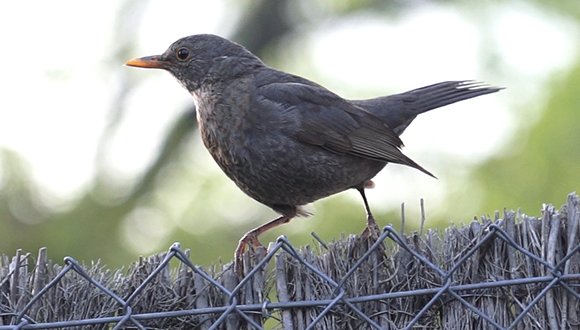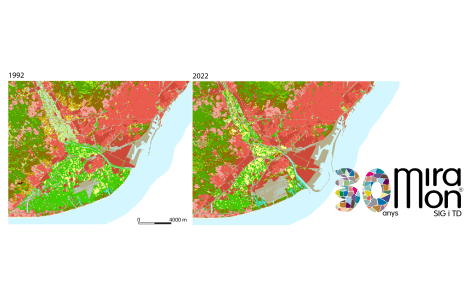Singing in higher pitches is no guarantee of success for city birds

An international study with participation of CREAF has concluded that singing in higher pitches is no guarantee of success for city birds. This was after observing city-dwelling birds in around 20 cities worldwide, Barcelona being one of them. The researchers compared around 400 species and analyzed whether these were more abundant in their natural habitat or in urban areas. What is certain is that species which sing at higher pitches are heard better against the low tones of the city, but there are other abilities which are more important when adapting to urban life, such as finding food and avoiding urban dangers.

In the city there are more “tenor” than “baritone” birds. The urban environment favors species which sing at higher pitches because they are heard better above the sounds of the city, where low tones predominate. Analogous to radio stations, many birds sing in the frequencies left available (in this case, the high ones) in order to communicate with their fellows, making it possible to find a mate and scare off the competition. To date, this fact led to the theory that singing in higher tones helped birds survive in cities. However, the study recently published in the journal Behavioral Ecology indicates that the frequency in which birds sing is not a decisive factor for successful city living, perhaps because there are other more important factors, such as finding appropriate food or avoiding disturbance by humans.
To arrive to this conclusion, scientists from Chile, Spain, and Holland studied if birds singing in higher registers are more abundant in cities than in their natural habitat.
The researchers observed 384 songbirds living in 21 cities and surrounding areas, including Barcelona.
“We knew that there are species that avoid urban areas, while there are others that benefit from them and colonize them successfully. We wanted to test if singing at higher pitch conditioned this behavior,” explains María Moirón, researcher at the Max-Planck Institute in Germany and first author of the paper.
Higher tones also implies higher risk
When birds are in a noisy place they adopt different strategies in order to be heard. In these cases birdsong is modified through learning. “New dialects within the same species have been found,” says Daniel Sol, CSIC and CREAF researcher and study coauthor. Some birds imitate sounds encountered where they are, while others sing louder, longer, or in the quieter hours. In general, being more malleable, innovative, creative, and having a greater capacity for learning all favor success in the city. These abilities permit improved acclimatization to new environments and at a much faster pace than evolution of the species itself.
However, in terms of birdsong, innovation is not always favorable. Too many changes to a melody can make it incomprehensible or unattractive for other members of the same species. “A blackbird can increment pitch so it is heard better, but it needs to continue sounding like a blackbird or else it won’t be successful communicating with other blackbirds,” explains Daniel Sol.
Fortunately, the hereditary component of birdsong is highly important for behavior, and is indispensable for birds to be able to recognize their own kind.
Birdsong should not only be distinctive in order to avoid confusions with other species, but also has to be efficiently transmitted in the environment inhabited by the species. For example, in areas with dense vegetation, natural selection has resulted in birds emitting lower tones (low frequency) because these pass through obstacles better and arrive to listeners less distorted.
Article:
Maria Moiron, Cesar González-Lagos, Hans Slabbekoorn & Daniel Sol, Singing in the city: high song frequencies are no guarantee for urban success in birds, Behavioral Ecology (2015), 26(3), 843–850.
Autora: Laia Núñez Casillas
Notícies relacionades

L’IPBES publica dos informes per transformar la manera com ens relacionem amb la natura, conservar-la i sobreviure

L’impacte social de la recerca es consolida a la cultura científica del CREAF


